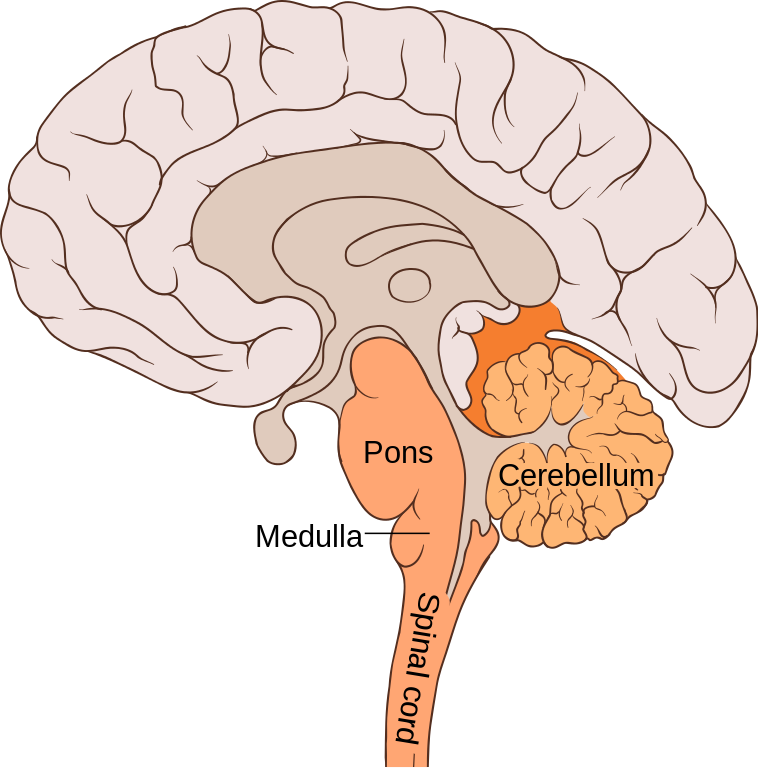The hindbrain

The hindbrain (developmentally derived from the rhombencephalon) is one of the three major regions of our brains, located at the lower back part of the brain. It includes most of the brainstem and a dense coral-shaped structure called the cerebellum. The brainstem is one of the most important parts of the entire central nervous system, because it connects the brain to the spinal cord and coordinates many vital functions, such as breathing and heartbeat.
There are three main parts of the hindbrain - pons, cerebellum, and medulla oblongata. Most of the 12 cranial nerves are found in the hindbrain.
Pons
The pons gets its name from the Latin word for ‘bridge’, and it connects the rest of the brainstem to the cerebral cortex. Bulbous in shape, it sits right underneath the midbrain and serves as a coordination centre for signals and communications that flow between the two brain hemispheres and the spinal cord.
Four cranial nerves are found in the pons: the abducens nerve helps coordinate eye movement; the facial nerve coordinates movement and sensation in the face; the vestibulocochlear nerve processes sounds and helps us maintain balance; and the trigeminal nerve coordinates chewing and carries sensory information from the face and the head.
Cerebellum
Behind the pons and the rest of the brainstem sits a structure called the cerebellum (Latin for ‘little brain’). In cross-section, this part looks like a layered, wrinkly coral. Just like the cortex, it has two hemispheres, with a dense layer of grey matter surrounding an inner region of white matter. It also contains special neurons called Purkinje cells, capable of processing many signals at once due to their highly complex dendrite branches.
The cerebellum coordinates our sensations with responses from our muscles, enabling most of our voluntary movements. It also processes nerve impulses from the inner ear and coordinates them with muscle movement, thus helping us maintain balance and posture.
Medulla oblongata
The lower part of both the brainstem and the overall hindbrain is the medulla oblongata, where the brain transitions to the spinal cord. It is only about 3cm long, but the medulla is an indispensable nerve tract which contains the control centres for our autonomic vital functions - heart rate, blood pressure, breathing - and many involuntary reflexes such as swallowing and sneezing.
The medulla contains both white and grey matter, and four cranial nerves stem from this region: the glossopharyngeal nerve coordinates some taste sensations and mouth movements; the vagus nerve controls mouth movements, voice and the gag reflex; the accessory nerve coordinates head and neck movements; and the hypoglossal nerve controls tongue movements and muscles involved in our speech.
Image credit: Patrick J. Lynch, medical illustrator; C. Carl Jaffe, MD, cardiologist/Wikimedia.
